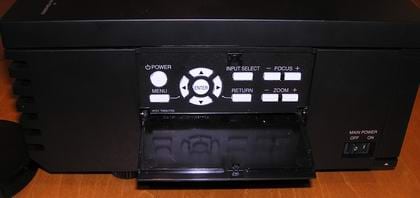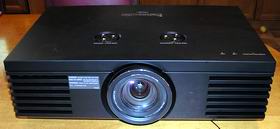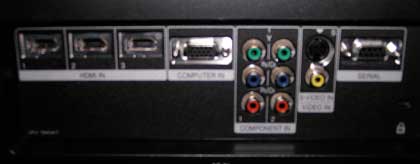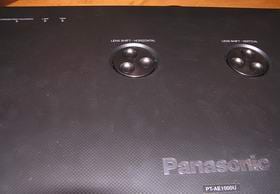- Panasonic PT-AE2000U Home Theater Projector Review
- Overview
- Panasonic PT-AE2000U Home Theater Projector: Physical Tour
- Panasonic PT-AE2000U: 1080p Home Theater Projector Review - Image Quality-2
- Panasonic PT-AE2000U: 1080p Home Theater Projector Review - Image Quality-3
- Panasonic PT-AE2000U: 1080p Home Theater Projector Review - Image Quality-4
- Panasonic PT-AE2000U: 1080p Home Theater Projector Review - Image Quality-5
- Panasonic PT-AE2000U: 1080p Home Theater Projector Review - Image Quality-6
- Panasonic PT-AE2000U: 1080p Home Theater Projector Review - Image Quality-7
- Panasonic PT-AE2000U: 1080p Home Theater Projector Review - Image Quality-8
- Panasonic PT-AE2000U Projector Overall Picture Quality-9
- Panasonic PT-AE2000U Home Theater Projector Review - General Performance-2
- Panasonic PT-AE2000U Home Theater Projector Review - General Performance-3
- Home Theater Projector Review: Panasonic PT-AE2000U LCD Projector: Summary, Pros, Cons
- Home Theater Projector Review: Panasonic PT-AE2000U LCD Projector: Summary, Pros, Cons-2
- Home Theater Projector Review: Panasonic PT-AE2000U LCD Projector: Summary, Pros, Cons-3
- Panasonic PT-AE2000U Projector: Pros
- Home
- All Reviews
- By Category
- By Manufacturer
- Best Projectors
- Best Projectors By Category
- Best Projectors On Amazon
- Best 4K Projectors
- Best Ultra Short Throw Projectors
- Best Laser TVs
- Best Gaming Projectors
- Best Home Theater Projectors
- Best Projectors Under $1,000
- Best Projectors Under $500
- Best Portable Projectors
- Best Outdoor Projectors
- Best Bright Budget-Friendly Outdoor Projectors
- Best Battery Powered Outdoor Projectors
- Best Outdoor Projection Screens
- Industry News
- Reports
- Projector Manufacturers
- Manufacturer Terminology
- Manufacturers
- Recent Articles
- Custom Integration
- Projection Terms
- Projector Manufacturers Categories
- Videos
- Blog
Close
Menu
- All Reviews
- By Category
- By Manufacturer
- Best Projectors By Category
- Best Projectors On Amazon
- Best 4K Projectors
- Best Ultra Short Throw Projectors
- Best Laser TVs
- Best Gaming Projectors
- Best Home Theater Projectors
- Best Projectors Under $1,000
- Best Projectors Under $500
- Best Portable Projectors
- Best Outdoor Projectors
- Best Bright Budget-Friendly Outdoor Projectors
- Best Battery Powered Outdoor Projectors
- Best Outdoor Projection Screens
- Latest News
- Reports & Guides
- Manufacturers
- Articles
- Custom Integration
- Projection Terms
- Blog
close





